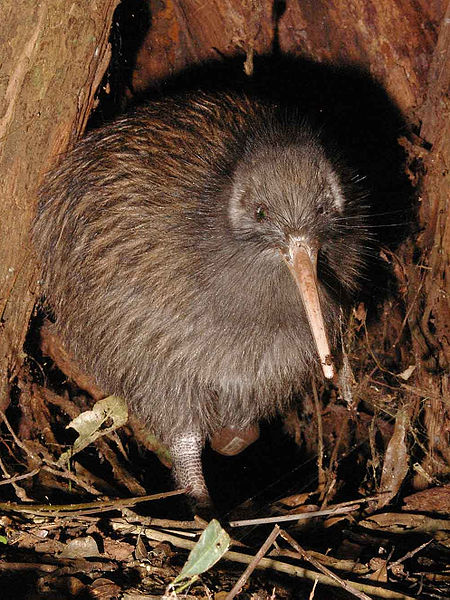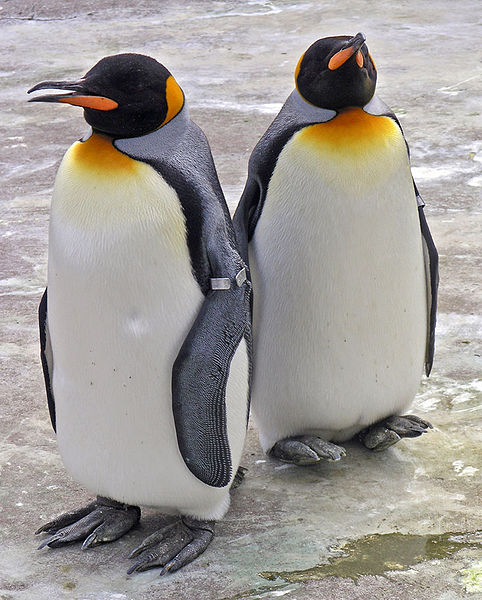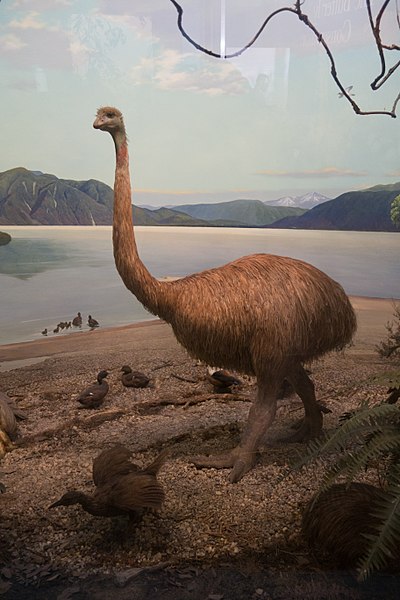Kiwi are flightless birds endemic to New Zealand of the order Apterygiformes. The five extant species fall into the family Apterygidae and genus Apteryx. Approximately the size of a domestic chicken, kiwi are the smallest ratites.
Kiwi (bird)
Clockwise from left: brown kiwi (Apteryx australis), little spotted kiwi (Apteryx owenii) and great spotted kiwi (Apteryx haastii) at Auckland War Memorial Museum
1860s drawing of Apteryx, illustrating its distinctive features, including long beak, short legs and claws, and dark hair-like feathers.
The West Coast Wildlife Centre, at Franz Josef on the southern West Coast of New Zealand, is part of Project Nest Egg, breeding the endangered local species of kiwi known as the rowi.
Flightless birds are birds that, through evolution, lost the ability to fly. There are over 60 extant species, including the well-known ratites and penguins. The smallest flightless bird is the Inaccessible Island rail. The largest flightless bird, which is also the largest living bird in general, is the common ostrich.
King penguins (Aptenodytes patagonicus). Penguins are a well-known example of flightless birds.
An Okarito kiwi (Apteryx rowi), also known as the rowi
Common ostrich (Struthio camelus). Ostriches are the largest extant flightless birds as well as the largest extant birds in general.
An extinct moa. Until the arrival of humans, New Zealand's only mammals were bats and seals, resulting in many bird species evolving to fill the open niches. While many of New Zealand's flightless birds are now extinct, some, such as the kiwi, kākāpō, weka, and takahē have survived to the present day.







